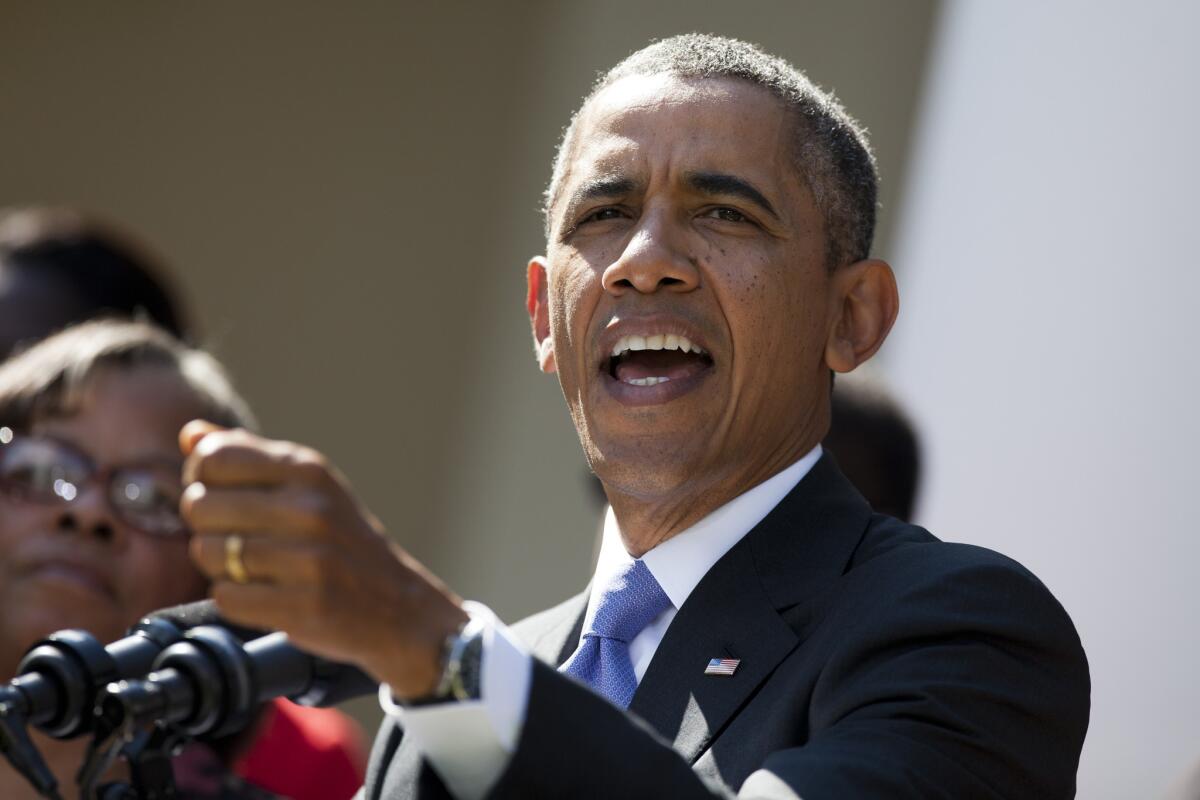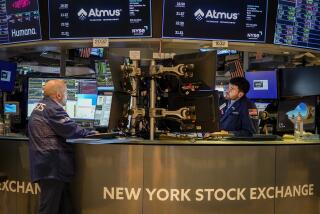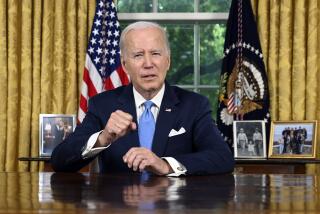Don’t wait on the debt limit

- Share via
Much is in flux in Washington this week. But two important realities have remained constant, whether certain elements in the GOP accept them or not: We must not default on the federal debt, and we shouldn’t wait until we’re on the brink of default to raise the debt ceiling. Here’s why.
As measured by economists Scott R. Baker, Nicholas Bloom and Steven J. Davis, policy uncertainty was more severe during the previous debt ceiling fight in the summer of 2011 than at any time since the terrorist attacks of Sept. 11, 2001. If the possibility of default produces such turmoil, imagine what actually defaulting would do.
As Republicans have so often pointed out in the fight over Obamacare, the ability of firms to make plans is severely hindered when government policies that affect them are in a state of extreme uncertainty. Raising the debt limit before the eleventh hour will help firms plan their activities, hire new workers and keep the (too weak) economic recovery going.
Consumer confidence plunged during 2011’s debt ceiling fight to a low not seen since the dark days of the recession, and it took a long time for confidence to recover. In a report released last week, Gallup found that economic confidence is already much worse now than it was in May and June, and attributes it to the current budget and debt ceiling battles.
Many economists believe that consumer confidence measures serve as an indicator of how households will spend money in the future. If households are rattled by Washington shenanigans, they are likely to rein in spending, which would negatively affect the country’s already fragile economy.
And even the threat of a default would likely raise the interest rate on Treasuries by increasing their riskiness. This would bring higher borrowing costs for businesses and tighter credit for consumers.
As we know from the last debt ceiling fight, the squabbling also costs taxpayers money. The Bipartisan Policy Center estimates that the cost to taxpayers of the delayed debt limit increase in 2011 will total almost $20 billion over 10 years.
The United States actually defaulted on its debt once, in spring 1979. Then, as now, the debt ceiling was a source of partisan bickering, and an agreement was reached only at the last moment. The late passage, along with computer problems, meant the Treasury Department was late in making payments on maturing securities to individual investors and in redeeming T-bills.
The moral of that story is clear: If Congress waits too long to raise the debt ceiling, the slightest error can throw the country into default on its obligations. Economists Terry L. Zivney and Richard D. Marcus, who studied the incident, concluded that this temporary default on a tiny share of the debt increased T-bill yields by six-tenths of a percentage point and resulted in $12 billion in additional interest payments.
If the near-default of 2011 and a very minor default in 1979 cost so much money, imagine how much an actual default would cost taxpayers.
After we ran up to the brink of default in 2011, Standard & Poor’s lowered the country’s credit rating for the first time. The response to that downgrade was not overwhelming, but a second downgrade would in all likelihood be more serious. A wide variety of institutions face restrictions on the risk profile of the assets they hold, and a second downgrade could make it harder for many of them to hold Treasury securities.
As if all that isn’t bad enough, default could harm the economy in much more destructive ways as well. As the risk-free asset par excellence, Treasury bills are used as collateral in many transactions, including in repo markets, which were a central player in the 2008 financial crisis. Shaken faith in their reliability would potentially trigger a credit crunch, Fedwire could seize up, a generalized flight from risk would drive down equity markets, banks could collapse. In other words, many of the pieces would be in place for a repeat of the 2008 financial meltdown. Federal Reserve Chairman Ben Bernanke probably wasn’t exaggerating when he said in July 2011 that default “would throw the financial system into chaos.”
Of course, no one knows for sure what would happen if the U.S. were to default. (Interest rates could fall in a flight to safety, for example, or the Fed could try to stop the panic by stepping in as the bond buyer of last resort, maintaining the liquidity of Treasuries.) But we shouldn’t wait to find out, and we shouldn’t charge up to the brink.
The GOP’s laundry list of demands in exchange for a debt ceiling increase is ridiculous. But President Obama’s position that he won’t negotiate on the debt ceiling is also outrageous: Previous presidents have done so, and he should too. Shut down the government if you must, but don’t shut down the entire economy. Washington needs to get serious about the debt ceiling. Quickly.
Michael R. Strain and Stan A. Veuger are resident scholars at the American Enterprise Institute.
More to Read
A cure for the common opinion
Get thought-provoking perspectives with our weekly newsletter.
You may occasionally receive promotional content from the Los Angeles Times.










